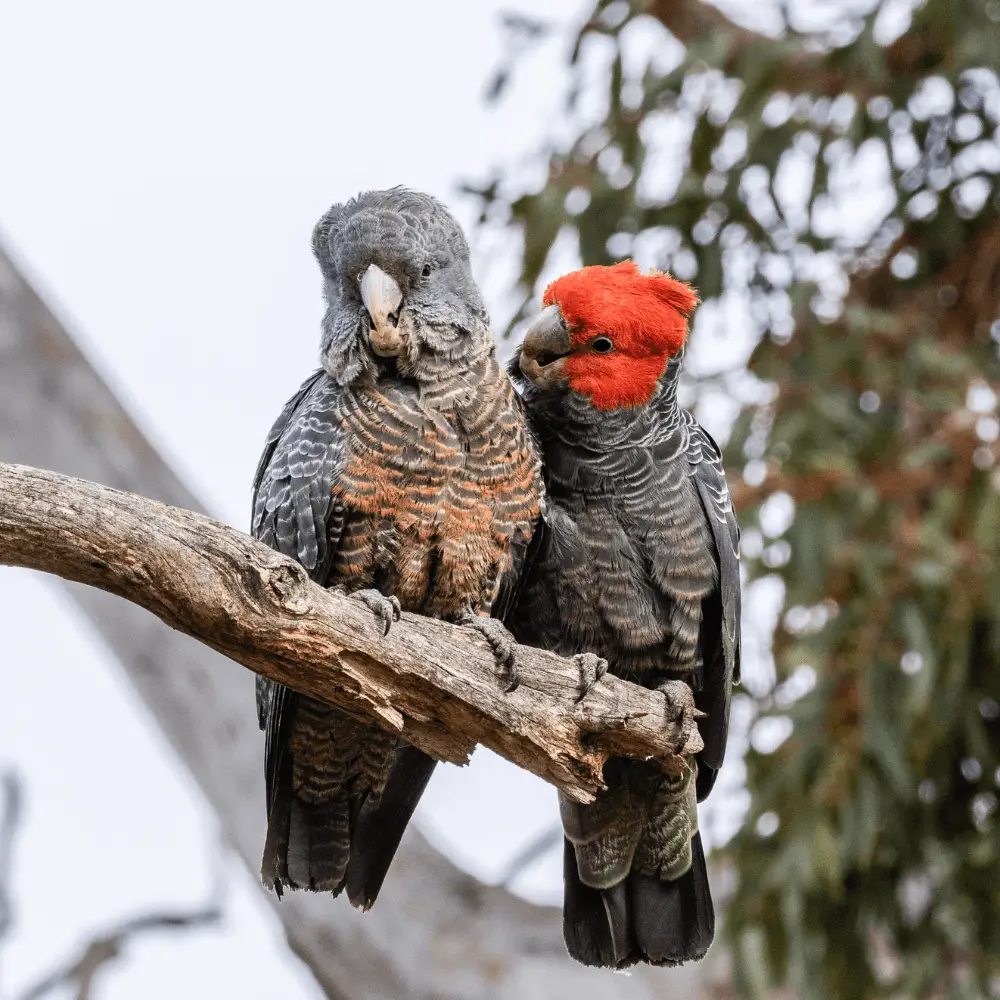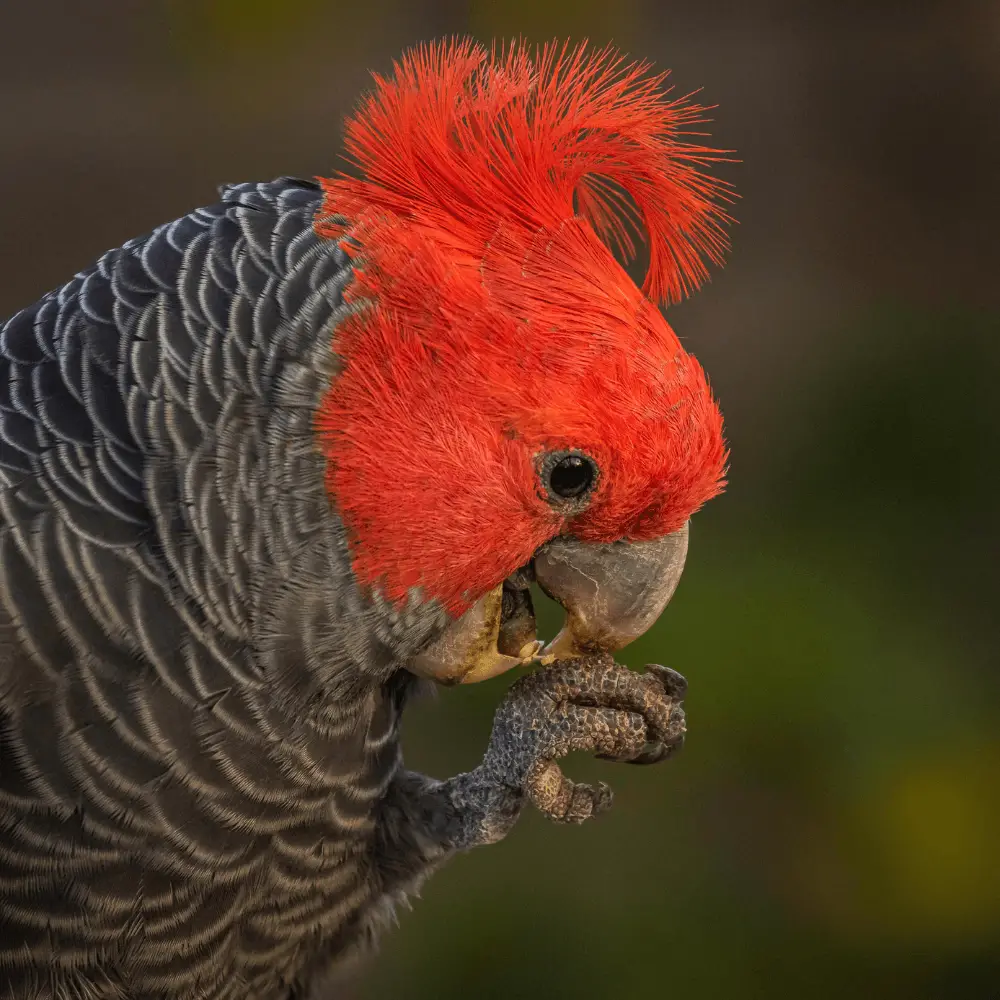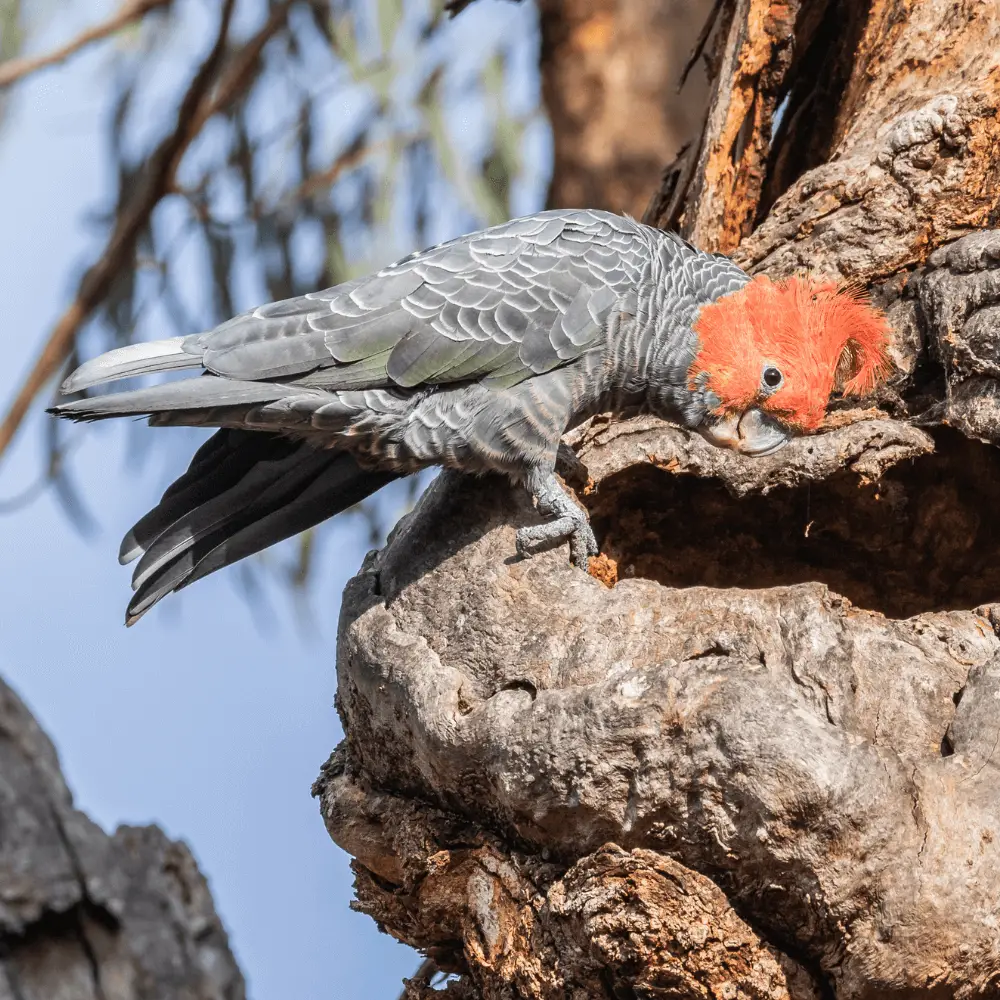Gang-gang cockatoo:(Callocephalon fimbriatum) is a small, robust cockatoo, with a dim crest, large broad wings, and the other short tail. Are gregarious but relatively quiet.
The males of the Cockatoo are immediately recognizable by their head Yes Crimson Crest. The rest plumage is slate grey.
The feathers on the lower part of the body are edged in green, orange, and yellow, giving a scaly appearance. The tail also has white horizontal bands. In all other respects, is identical to the male.
The young are similar to the female ones, distinguished by their Back to Top, the Redhead, and a shorter and less twisted Crest.
The Red-headed Cockatoo cannot be confused with other species of parrots. In flight, however, sometimes their shape resembles the galah cockatoo.
- Order: Psittaciformes
- Family: Cacatuidae
- Scientific name: Callocephalon fimbriatum
- Genus: Callocephalon
- Citation: (Grant,JB, 1803)
- Protonimo: psittacus fimbriatus
Gang-gang cockatoo habitat

During the summer they are found in montane forests and areas with dense undergrowth and shrubs. In Winter they will pass to drier and lower altitudes, more open forests. They can often be seen along roads and in urban parks and gardens. They need tall, hollow trees to nest.
Cockatoo reproduction
Family groups are often seen feeding together during the breeding season. In some cases, nurseries will be established where several pairs have nested together, their young roosting together in the same tree, while their parents search for food.
SOURCE: BIBY TV
Gang-gang cockatoo food
It feeds primarily on native and introduced tree and shrub seeds, with a preference for Eucalyptus, barbs, and thorns. Also eats berries, fruits, dried fruits, insects, and their larvae.

Endangered
• Current IUCN Red List Category: Least Concern.
• Demographic trend: On the rise.
Came negatively affected by deforestation and the removal of mature trees (potential breeding sites). One population is listed as threatened: in the Lane Cove Valley, New South Wales.
The rest of the population is suspected to be increasing and now will winter in suburban Canberra.
The world population is estimated at more than 20,000 individuals.
Gang-gang cockatoo pet

Is common in poultry and hard to find as a pet.
They are intelligent and playful, but very destructive and require abundant toys so as not to attack home furnishings.
When bored, self-harm is often used as a way to combat boredom.
Gang-gang cockatoo lifespan
Gang-gang cockatoo life expectancy can overcome 60 years.
Related article:

